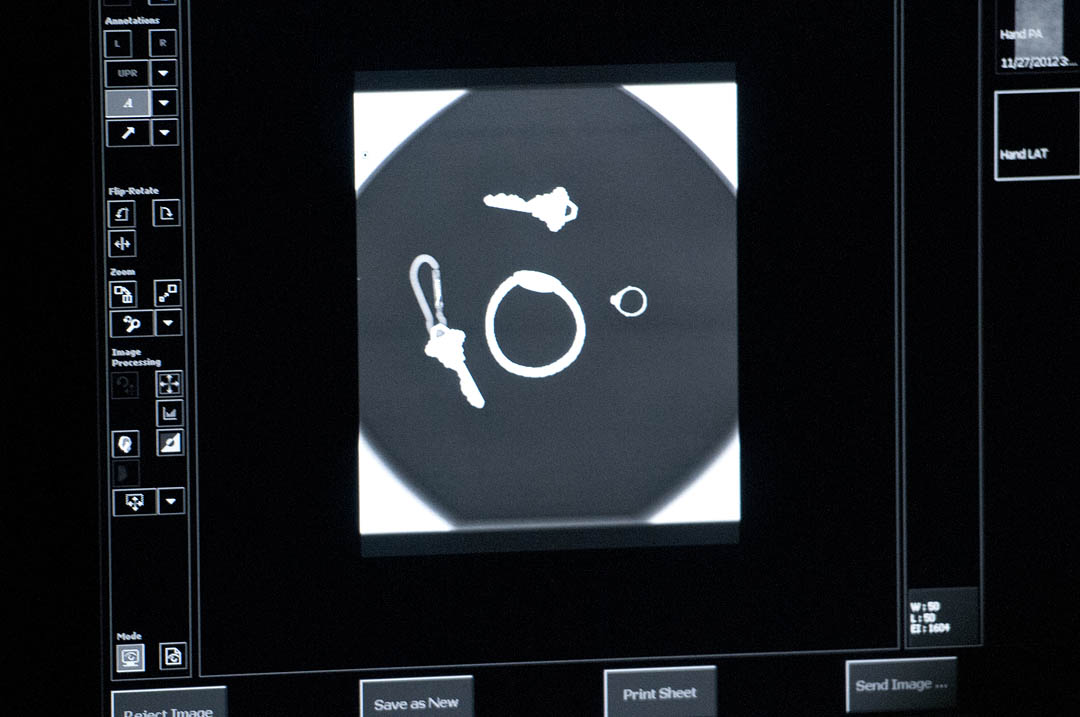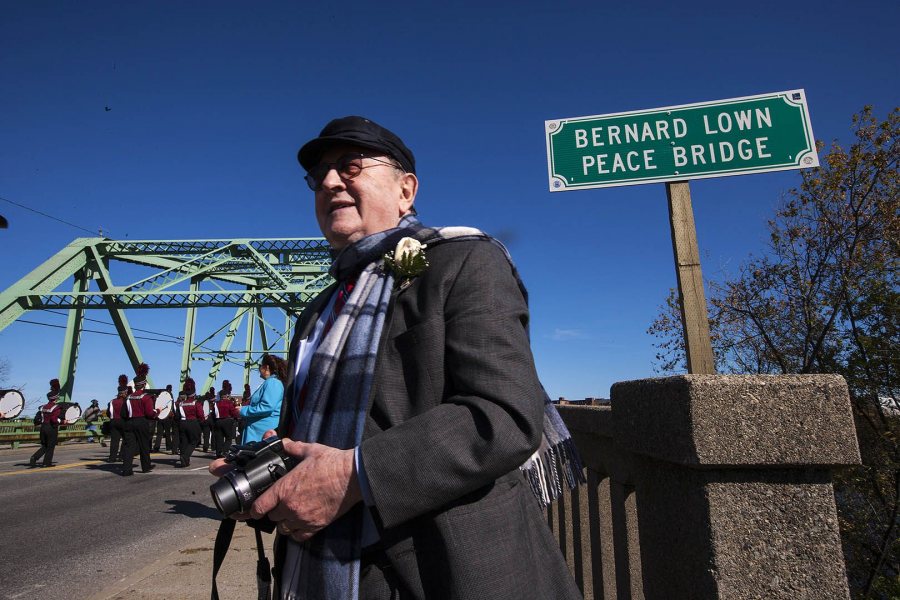
The area’s southernmost bridge across the Androscoggin (the one near the Auburn Rollodrome) was named for Lewiston son Dr. Bernard Lown in 2008.
Name that Bridge
Maine bridge number 3330, built in 1936 after a flood took out the original 1873 bridge, never had an official name. Locally, it was known as the South Bridge.
Lown, Lithuania, and Lewiston
The family of Bernard Lown were Jewish émigrés from Lithuania. Lown’s uncle Philip came to the U.S. in 1907 and owned shoe factories in Maine cities, including Auburn. Bernard’s family arrived around 1934, and he attended Lewiston High School and the University of Maine. He received a medical degree from Johns Hopkins.

Standing on the Lewiston side of the Androscoggin River, Bernard Lown watches the festivities during dedication ceremonies for the Bernard Lown Peace Bridge on
Oct. 17, 2008. (Phyllis Graber Jensen/Bates College)
Peace Bridge
The bridge’s full name is now the “Bernard Lown Peace Bridge.” Besides being a cardiologist, Lown is a Nobel Peace Prize–winning activist, receiving the 1985 award as co-founder of International Physicians for the Prevention of Nuclear War.
The Bates Peace
Local resident Al Harvie ’65 pushed to name the bridge for Lown. Larry Gilbert and John Jenkins ‘74, then the respective mayors of Lewiston and Auburn, supported the idea. The Maine Legislature approved the naming thanks to a bill submitted by then-Rep. Dick Wagner, professor emeritus of psychology.
‘Timely Reminders’
When he received a Bates honorary degree in 1983, the citation noted that Lown’s peace activism offered “timely reminders to his own profession that its power ought to be in service to the healing of nations.”
Heart Healer
Lown invented the direct-current defibrillator in 1960, a vast improvement over AC defibrillation.
This story was originally published the Fall 2016 issue of Bates Magazine.


